April 15, 2014
While I was futzing around in the yard yesterday afternoon, replenishing the brush piles, I heard some rustling in the leaf litter and looked over to see a couple of Cuban brown anoles staring each other down. I don’t usually pay that much attention to the Cubans; they’re very feisty little beasts and all and that’s cool, but they’re so common it’s easy to take them for granted. Aside from the whole invasive exotic thing, they are amazingly watchable little lizards.
What caught my attention about this pair was the spectacularly mottled color pattern of the larger male. I’m used to seeing the big males in a variety of earth tones from light grayish-brown to deep chocolate, often with some flecking or patterning, but subtle. This big guy I was watching was over the top. So I ran (not literally) inside and grabbed the camera, threw a macro on it, and rushed back outside, hoping the two combatants didn’t take it elsewhere. Needless worry – they hadn’t moved a micron from when I left a minute or two earlier. Like most reptiles, Cubans spend a lot of time not moving a muscle. But these guys weren’t relaxed – they were laser-focused on each other (and aware of me as well, but unperturbed as long as I didn’t move too quickly) and tensed to the max. Standing tall, saggital and dorsal crests erect, head elevated and cocked to one side. They were doing some pushups, but no dewlapping. They were ticking time bombs, ready to explode.
But they took their time to do it. For minutes at a time, they just faced off, with slight shifts in position, always mirrored by the other, until eventually the bigger guy made his move. Mouth agape, he charged and grabbed the slightly smaller male, and after a brief tussle tossed him aside. It was over almost instantly. When they crank it into burst mode, those little dudes can scoot.
Eventually they took their beef from the ground up into the brushpile. The dominant male was the first to climb a foot or so up a stick from the pile. He turned around, perched head downwards, and surveyed his domain. The lesser Cuban had heart, though. He climbed up the big guy’s branch looking for more. After a couple of bouts of gaping threats towards each other, they locked up again. The result was the same. Alpha dog tossed the subordinate off the brush pile. They apparently can generate a lot of force and velocity with those powerful necks. I’ve seen big males toss smaller lizards a foot or more.
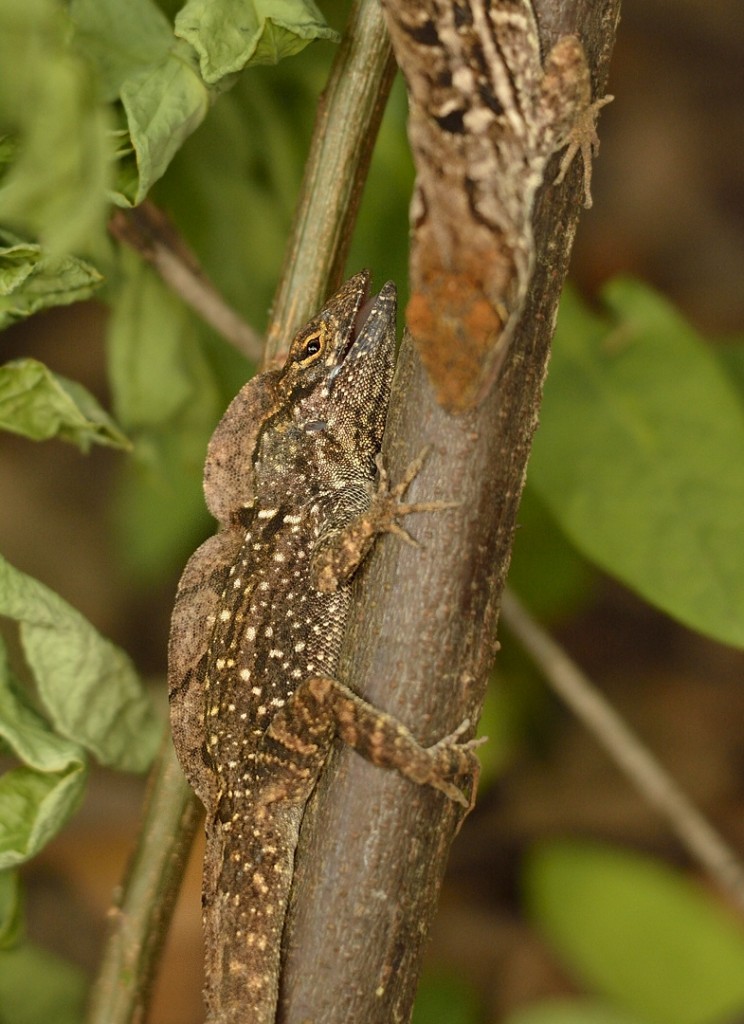
There was no quit in this spunky male. He sported a regrown tail he probably lost in an earlier encounter with alpha.
Thoroughly entertaining. Cuban browns are not every Floridian’s favorite herp, but given that we’ve got them, why not appreciate them? In one of the labs I teach for an intro biology course for psychology majors I have students compare behavior of an ectotherm and an endotherm (cold-blooded vs. warm-blooded, if you must) to look for differences in activity level and behavioral complexity. The focal species are gray squirrels and Cuban brown anoles. I don’t even have to show the students how and where to find the lizards. They’re everywhere. I can’t imagine that there are many college campuses that have such an engaging herp in such abundance, easily observable most months of the year. In pedagogical jargon, they are a high-impact herp. And studying them is surely a best practice.
For anyone with an inordinate fondness for Anolis lizards, do yourself a favor and visit the blog of my friend and blogging inspiration Janson Jones. He raves with great regularity about the wonders of all things Anolis on his blog Dust Tracks on the Web. He does that far more eloquently than I can, for sure, but then he’s a humanities-type guy while I’m a blunt-edged scientist. It’s a stacked deck.
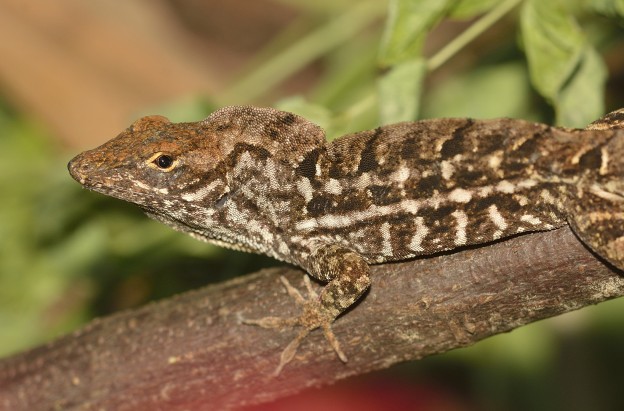
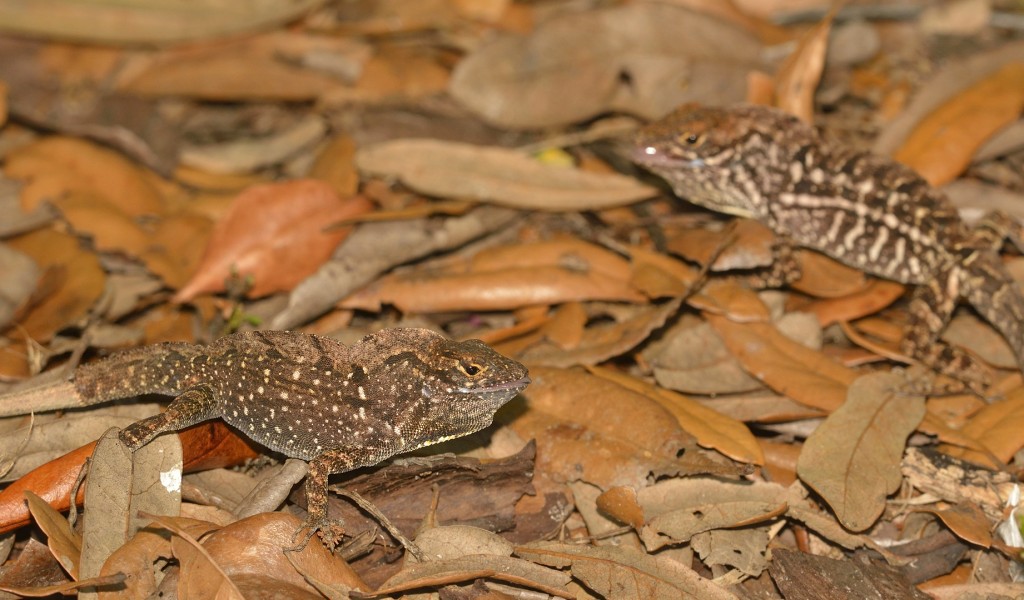
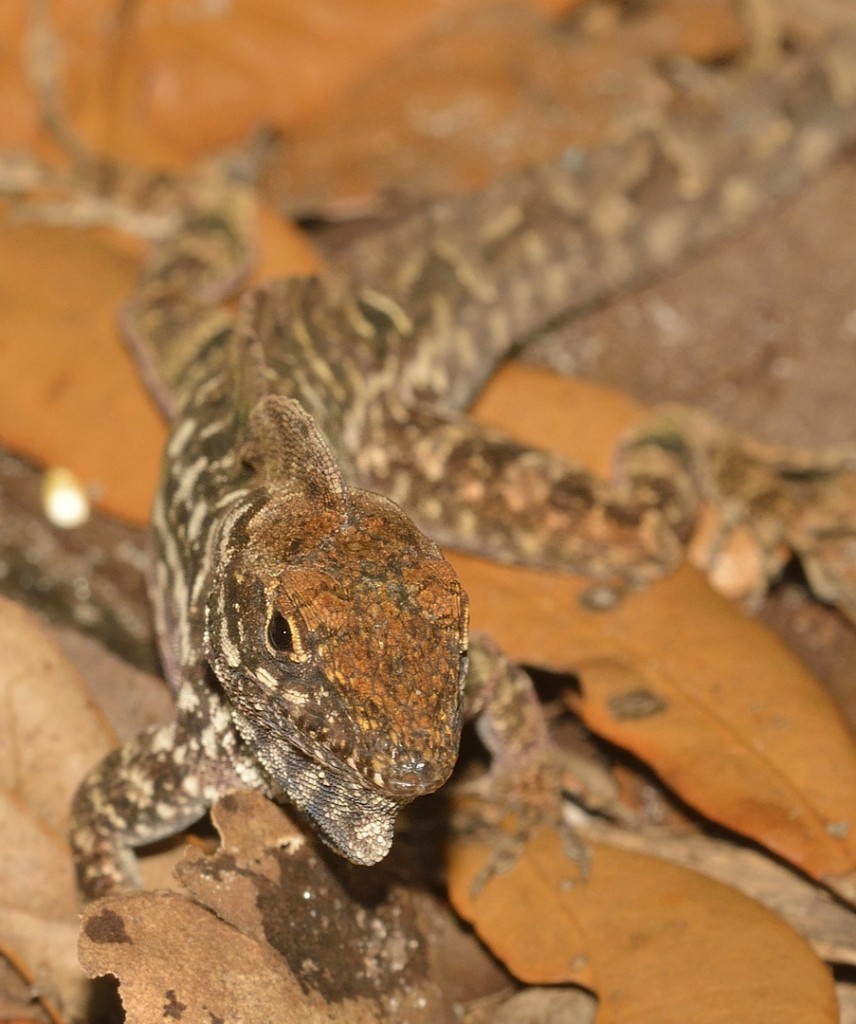
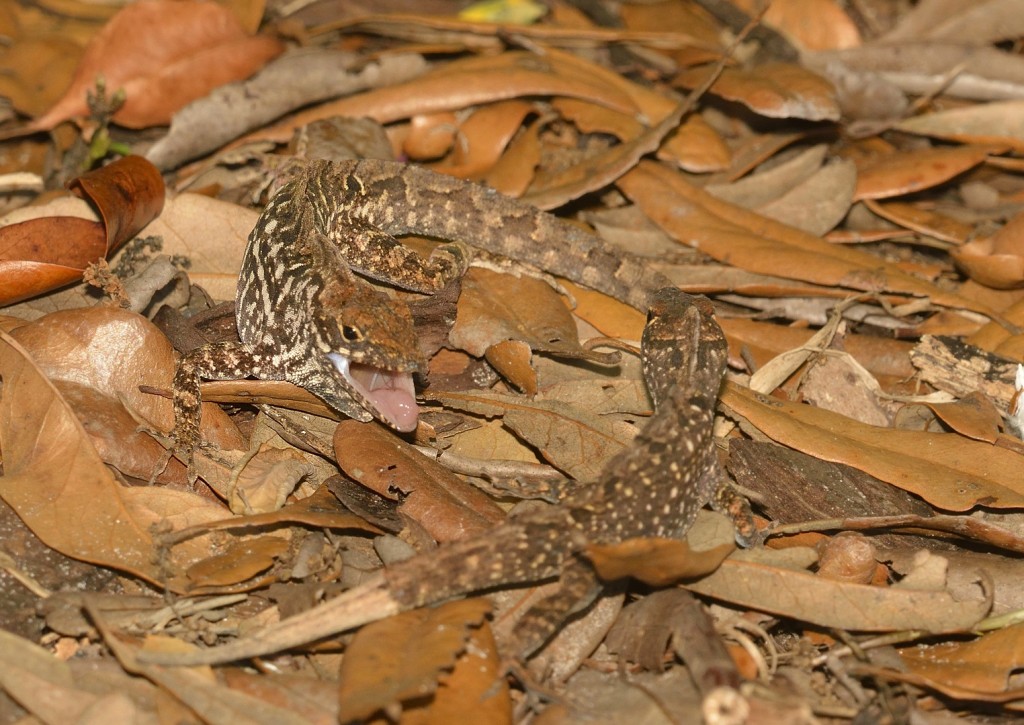
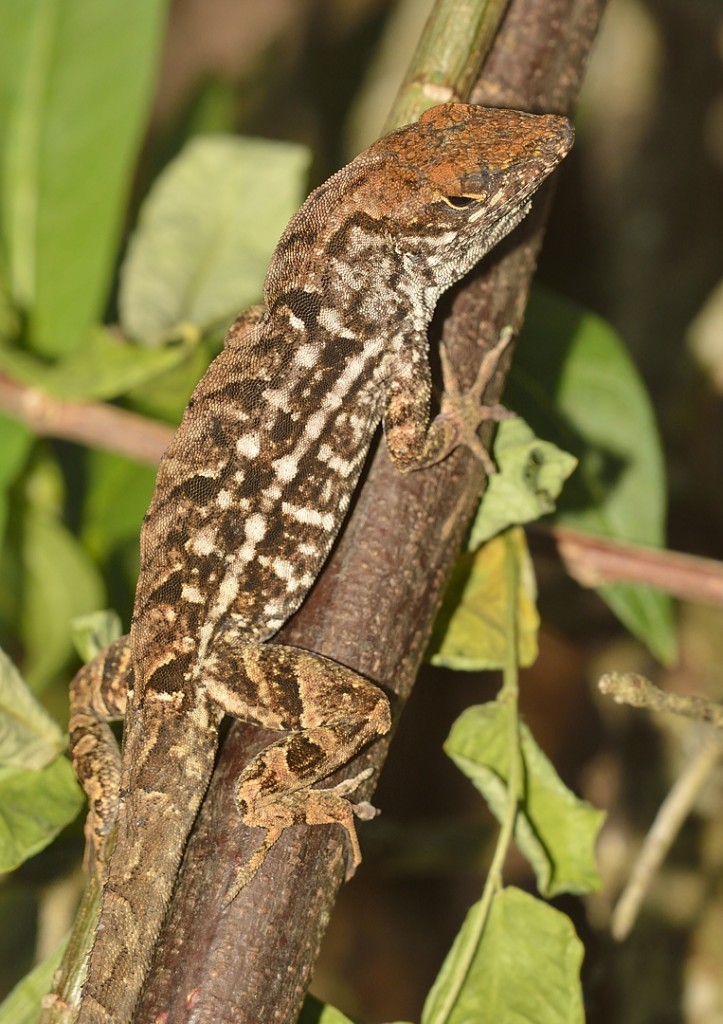
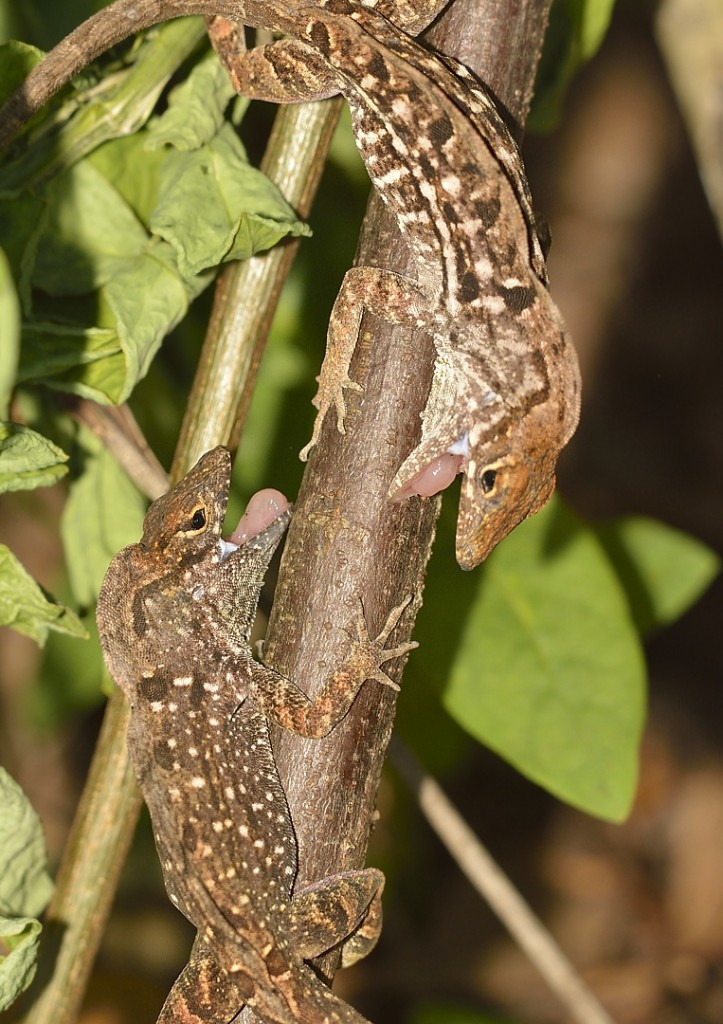
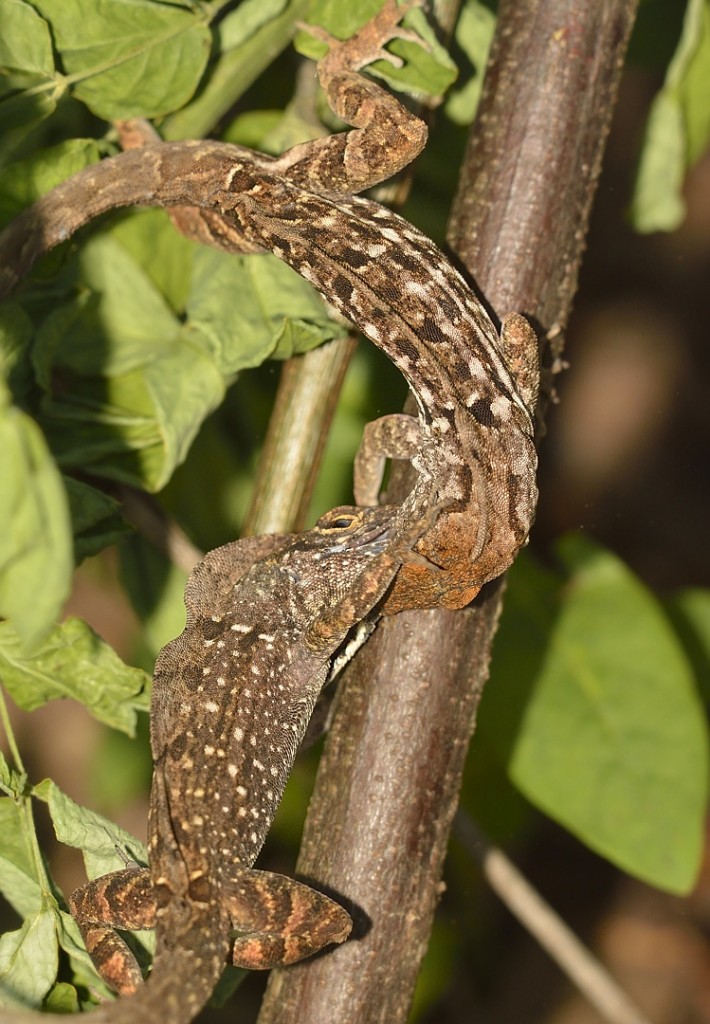
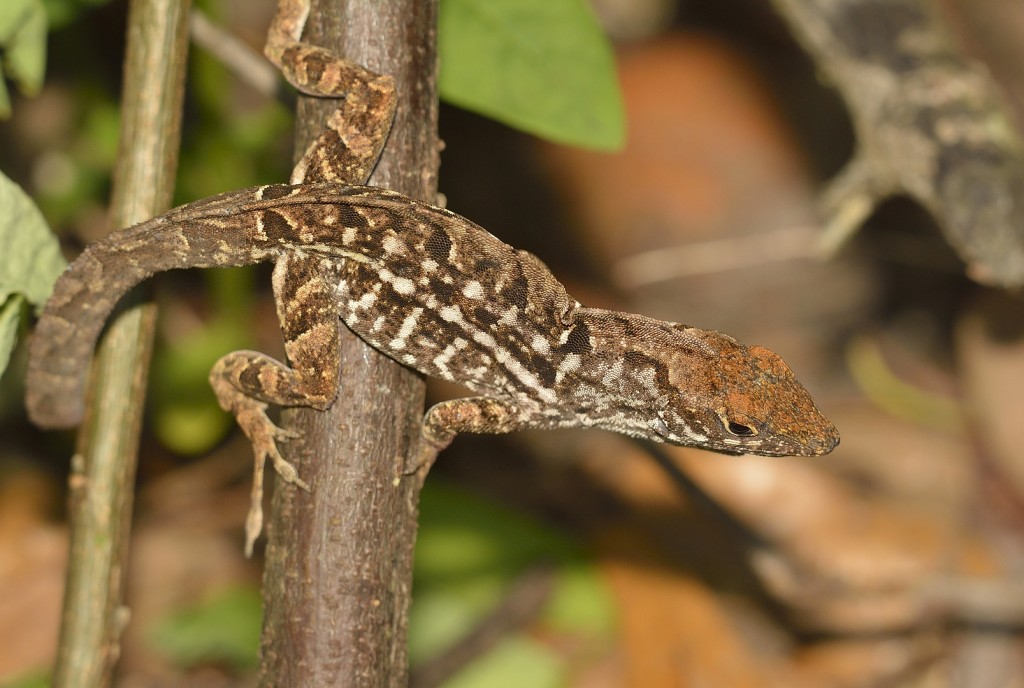
Thanks for the generous nod, Peter, as well as for the awesome narrative of this little Clash of the Titans! Our sagrei males are particularly feisty right now — right on schedule. The carnage and posturing is glorious! In our yard, there are few carolinensis to be found right now. They’ve gotten out of dodge and headed back up the treeline where they belong — out of the trunk-ground territory. Heh.
Thoroughly enjoyed this latest observation and report, Pete. It is certainly a challenge to overlook these beasts you’ve highlighted. In further study I am amazed that there is such diversity in our region.
It is interesting to know more details about these introduced creatures. It’s unfortunate that they are thought to be displacing the much less common green anole. I see the latter in the wild a couple of times a year verses almost daily for the former.
There is a Little Blue Heron that makes rounds through my neighborhood very rarely and seems to relish on brown anoles, perhaps after dining on all the green ones that may have been around these parts.
I have an albino anole that I have been observing in the breezeway here for at least a couple of years which I noticed today has found refuge in my home. My bad for leaving the door open when watering a potted citrus tree. It chose to seek refuge behind some furniture instead of accepting brief capture and freedom. I will be more diligent to deal with this when I see it again. In the meantime, it may encounter a brown anole which entered through the open patio door last week.
Thanks, Janson and Bob